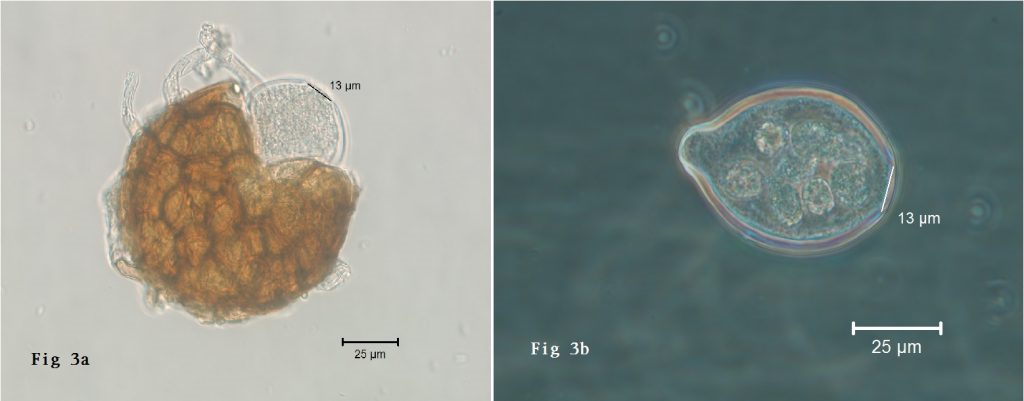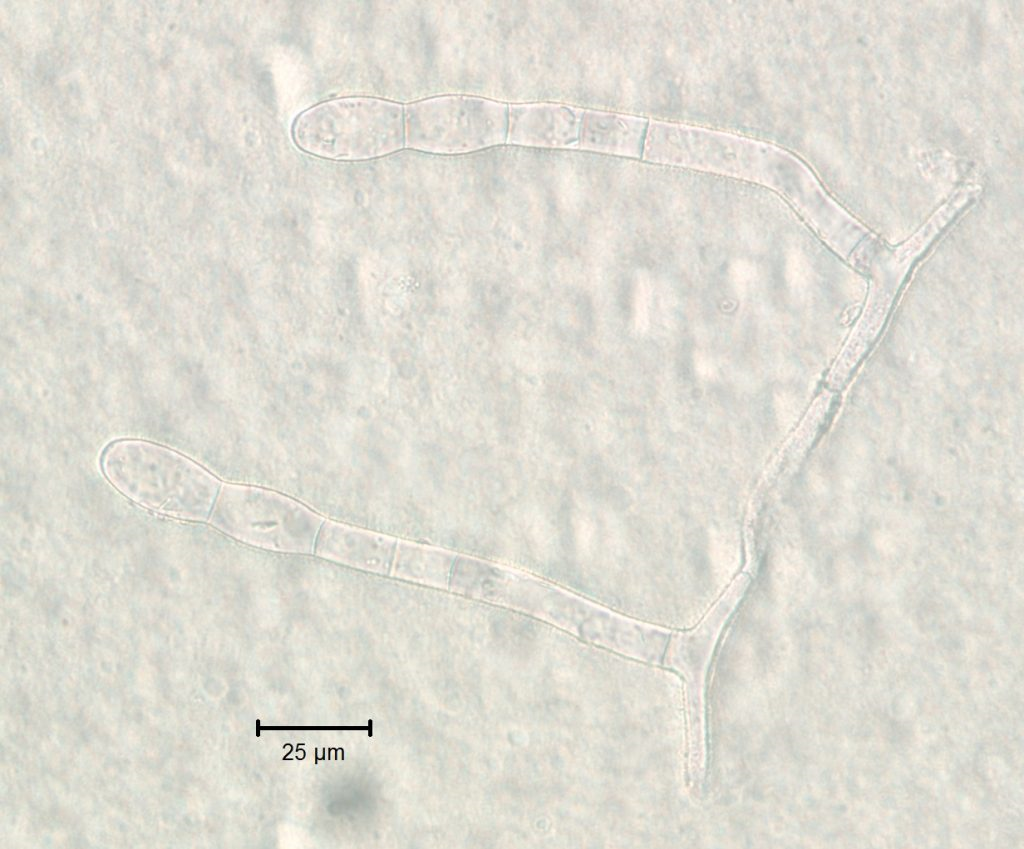Podosphaera erigerontis-canadensis
Powdery mildews are caused by fungi in the order Erysiphales, which contains only a single family, Erysiphaceae.

- Phylum: Ascomycoya
- Class: Leotiomycetes
- Order: Erysiphales
- Family: Erysiphaceae
- Genus: Podosphaera
- Epithet: erigerontis-canadensis
- Authority: (Lev) U. Braun & T.Z. Liu
- Collection #: PLP847_2018_174
- Locale: Ingham County, Michigan
Powdery mildews are caused by fungi in the order Erysiphales, which contains only a single family, Erysiphaceae. An estimated 7600 plant species are affected by the nearly 700 species of powdery mildew that are classified in 15 genera (1). Powdery mildew pathogens are obligate parasites, which mean they need a living host to grow and reproduce. In order to extract nutrients from the plant tissues, the fungus produces specialized structures called haustoria that intrude into the plant cell (Fig. 1).
Podosphaera erigerontis-canadensis causes powdery mildew on dandelion (Taraxacum spp.). As with all powdery mildews, it is characterized by white powdery mycelium covering the leaf surface (Fig. 2). Microscopic features are required to identify to genus and species.

Microscopic characteristics: Chasmothecia (60-80 μm) are subglobose, mostly unadorned and contain a single ascus (Fig 3a). Asci are ellipsoid-ovid, 50-75 μm with a characteristic small (8-15 μm) terminal oculus (Fig 3b). Conidia (25-35 x 14-19 μm) form in chains of up to 8 spores (Fig 4).


References:
- Glawe, D.E. and Grove, G.G. (n.d.). Powdery Mildew Diseases. Pacific Northwest Pest Management Handbooks. Oregon State University.
- Braun & Cook (2012) Taxonomic Manual of the Erisphales (Powdery Mildews). CBS-KNAW Fungal Diversity Centere, Utrecht, The Netherlands.



 Print
Print Email
Email



